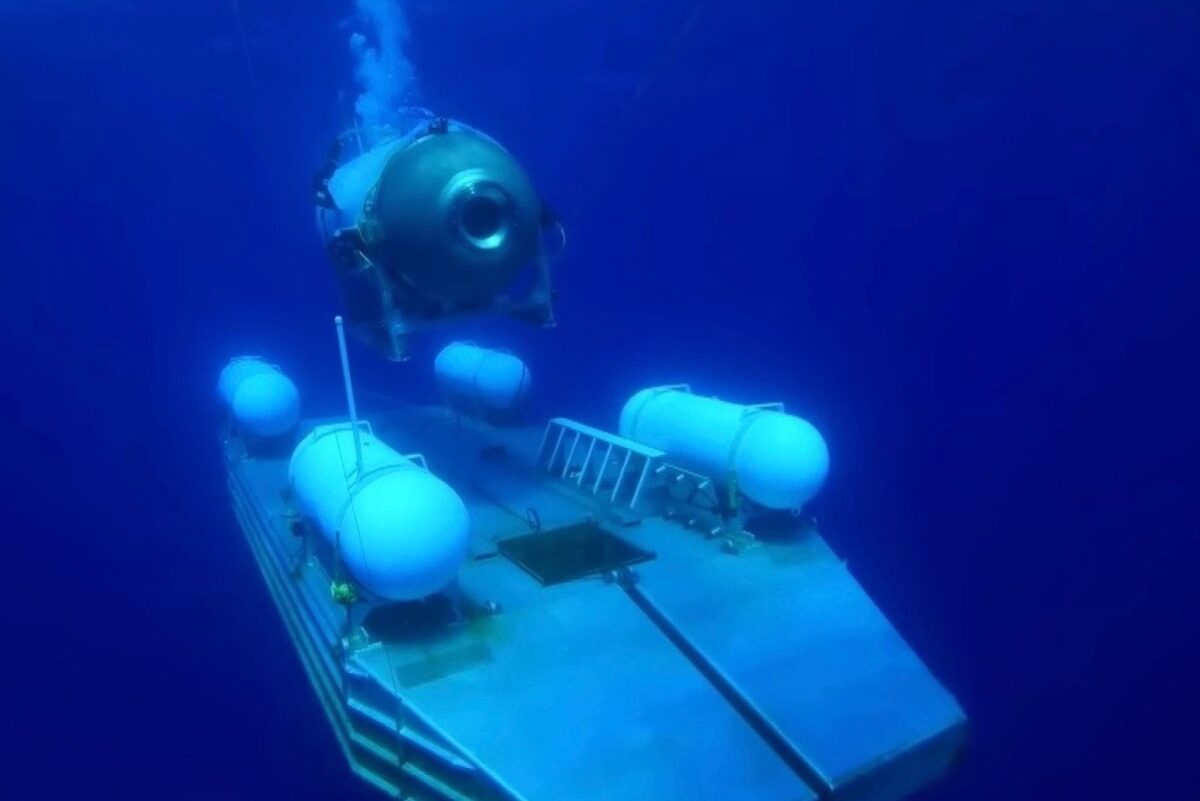The sound sonar device “pinged” during the search for OceanGate’s Titan, a small tourist submarine that went missing near the wreckage of the Titanic in the North Atlantic Ocean with five people on board, according to US media reports on Wednesday. The search for the missing submarine has continued for the fourth consecutive day, with government agencies, US and Canadian naval forces, and deep-sea exploration companies all involved in the search and rescue efforts.
The US Coast Guard reported that two planes, a submarine, and helicopters equipped with sonar equipment are participating in the search. Billionaire British entrepreneur Hamish Harding who has been living in Dubai for many years was among those on board the missing submarine, which disappeared while transporting wealthy passengers on a two-hour dive to the Titanic wreck site in the deep waters off the coast of Canada.
According to Rolling Stone magazine, a Canadian P-8 aircraft “heard pinging every 30 minutes in the area, and after four hours, an additional sonar device was deployed, and the pinging was still audible.” CNN cited an internal US government document that heard the pinging without specifying when it was detected.
Read more: The missing continent that took 375 years to find
Less than 30 hours
The Titan submarine is designed to stay underwater for up to 96 hours, giving the five passengers aboard until Thursday morning to survive before the air inside runs out. Currently, the submarine has less than 30 hours of remaining oxygen. The submarine’s captain and four others were on board early on Sunday when contact was lost with the mother ship after an hour and 45 minutes of diving.
Possible scenarios
Assistant Professor Eric Fossel, director of shipbuilding at the University of Adelaide in Australia, discussed the possible scenarios for what happened to the submarine and the reasons behind its disappearance. Fossel pointed out that losing power in the Titan means losing communications, adding, “Some submarines have two sources of energy, electricity, and others such as compressed air or hydraulic, to operate safety systems. It is not clear whether energy support options are available on Titan in the event of a malfunction.”
If any of the electrical circuits on the submarine are subjected to an increase in voltage flow, it is possible that a fire may occur, which could destroy the submarine’s communication systems and create toxic fumes for the passengers, according to Fossel.
On the other hand, Professor Stefan Williams from the Australian Centre for Field Robotics at the University of Sydney suggested that “the other possibility is that there may have been a fire caused by an electrical short circuit. This could damage the submarine’s electronic systems used for navigation and control.”
Others suggest that strong currents under the water may have pushed the submarine too close to the Titanic, causing it to get stuck or tangled with its wreckage. Submarines face increasing pressure the deeper they dive, and even a small leak can be catastrophic at great depths.

Specs and features
Little information is available about the missing submarine, which was carrying three tourists.
All that is known about it is that it weighs 11,340 kilograms and that its journey, which usually lasts a maximum of 8 days, starts from the remote Newfoundland coast in eastern Canada, 592 km away from the sunken Titanic wreckage at a depth of 3,800 m. Each complete dive by the submarine to explore the wreckage lasts approximately 8 hours, half of which is spent descending and ascending, according to the information on the OceanGate company website, which owns three submarines.
Additionally, as per the company’s website, Titan, which can carry five people – three paying tourists each paying $250,000, as well as a captain and an engineer – is the only one of the company’s three submarines capable of diving deep enough to reach the remains of the world’s most famous shipwreck. It features life-supporting equipment, including oxygen for 96 hours, and can reach a depth of 4,000 meters.
Prior lawsuit?
It was reported that OceanGate faced a lawsuit in 2018 when a now former employee claimed they were relieved from duty after raising concerns about the depths its submersible could safely travel to.
According to court documents obtained by The New Republic, the US-based magazine revealed OceanGate employee David Lochridge, who at the time was the company’s director of marine operations, alleged wrongful termination.
For more on travel stories, click here.








